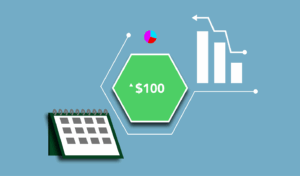Let’s be real—most businesses waste money on Meta ads.
They launch a campaign, see some clicks, maybe a couple of sales, and then crank up the budget hoping it’ll just keep working. Spoiler: it doesn’t. Performance drops, costs go up, and they’re left wondering what happened.
Here’s what happened: they tried to scale without a system. No strategy. No structure. Just vibes.
If you want Meta to actually work for your business—and not feel like a black hole for your ad budget—you need to stop guessing. Scaling isn’t about spending more. It’s about spending right.
The Trap Most Brands Fall Into
This is how it usually goes.
You run a few ads. One of them gets good results for a few days. Exciting stuff. You increase the budget. At first, it holds… then the ROAS drops, your CPA jumps, and now you’re burning cash just to chase those early numbers.
Sound familiar?
That’s because most businesses think of Meta as a slot machine. You put in money, hope for a jackpot. But Meta isn’t Vegas—it’s a system. And systems need inputs. If your inputs suck (i.e., creative, audience, offer), no amount of budget will save you.
Testing Isn’t Sexy, But It’s Everything
Everyone wants to talk about scaling. No one wants to talk about testing. But testing is what makes scaling possible.
It’s where you figure out:
- What type of ad grabs attention in the first 3 seconds
- What kind of offer actually gets clicks or sales
- Which audiences convert at the lowest cost
You can’t scale confidently until you’ve tested methodically. Otherwise, you’re just throwing money at ads and praying the algorithm figures it out for you.
Here’s the mindset shift: testing isn’t a phase—it’s part of the process. Always be testing, even when you’re scaling. That’s how you stay ahead of fatigue, changes in the market, and platform volatility.
Scaling Is a Process, Not a Budget Slider
A lot of people think scaling just means raising the budget. Technically, yeah, that’s scaling—but doing it without structure is like stepping on the gas in a car with no steering wheel.
Real scaling looks like this:
- You’ve got proof: You know exactly which creative and audience combo works.
- You scale horizontally: You take what’s working and replicate it across new audiences, geo targets, or offers.
- You scale vertically: You increase budgets in small, controlled increments. Not doubling overnight.
- You rotate in fresh creative: Even the best ad burns out. You stay ahead of the fatigue.
Scaling is controlled. Intentional. You’re not chasing performance—you’re optimizing it.
Advantage+ Campaigns Are Great—If You Know What You’re Doing
Meta’s Advantage+ Shopping campaigns are tempting. Plug in a few creatives, give it a budget, and let AI take the wheel. And yes, they can work—but only if you’ve already dialed in your angles, messaging, and creative assets.
If your inputs suck, Advantage+ just scales failure faster.
We’ve seen it time and time again—brands think ASC is a shortcut. But if you haven’t done the groundwork with structured testing, you’ll end up feeding bad data into the system and wondering why it doesn’t work.
Bottom line: Meta’s AI is powerful, but it’s not magic. You still need a strategy behind it.
The Power of Structure
The reason structure matters is simple: it creates clarity. You know what’s working, why it’s working, and when to scale.
When you have a testing system in place, every dollar spent is either producing ROI or producing insight. There’s no wasted spend—just forward progress. It turns Meta into a predictable growth machine instead of a hit-or-miss experiment.
It also gives your team alignment. You’re not arguing over opinions. You’re making decisions based on data.
What This Actually Looks Like in Practice
Let’s say you’re running ads for a fitness brand. Instead of launching five different ads to a broad audience and hoping for the best, you:
- Break down your angles (fat loss, muscle gain, clean energy)
- Create ad variations for each one
- Test them against different audiences (broad, lookalikes, interests)
- Track performance by angle, not just ad
Now you know “fat loss + UGC video + broad audience” is the winner. Cool. That becomes the foundation of your scaling campaign. Everything else gets cut. You scale that angle with new creatives, refresh hooks, try it in Advantage+—and suddenly you’re not just spending more, you’re scaling what works.
That’s how real performance marketers operate.
Final Thought
If you’re tired of your Meta ads feeling hit or miss, this is your wake-up call.
Stop throwing money at the platform and hoping it figures itself out. Build a system. Test intentionally. Scale what’s proven. Refresh before it fatigues. That’s how you get consistent, profitable growth.
You don’t need a bigger budget. You just need to get smarter with the one you already have.





